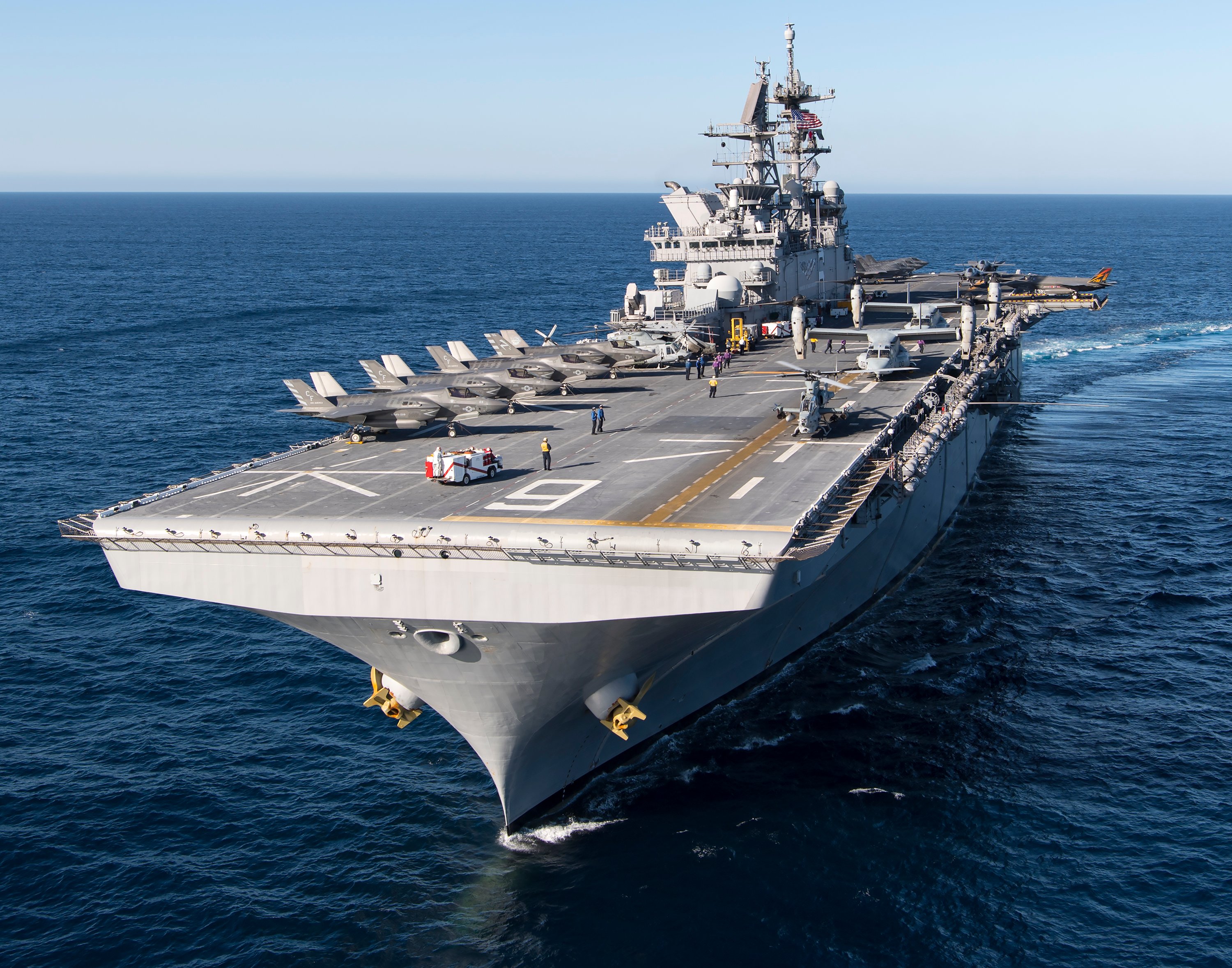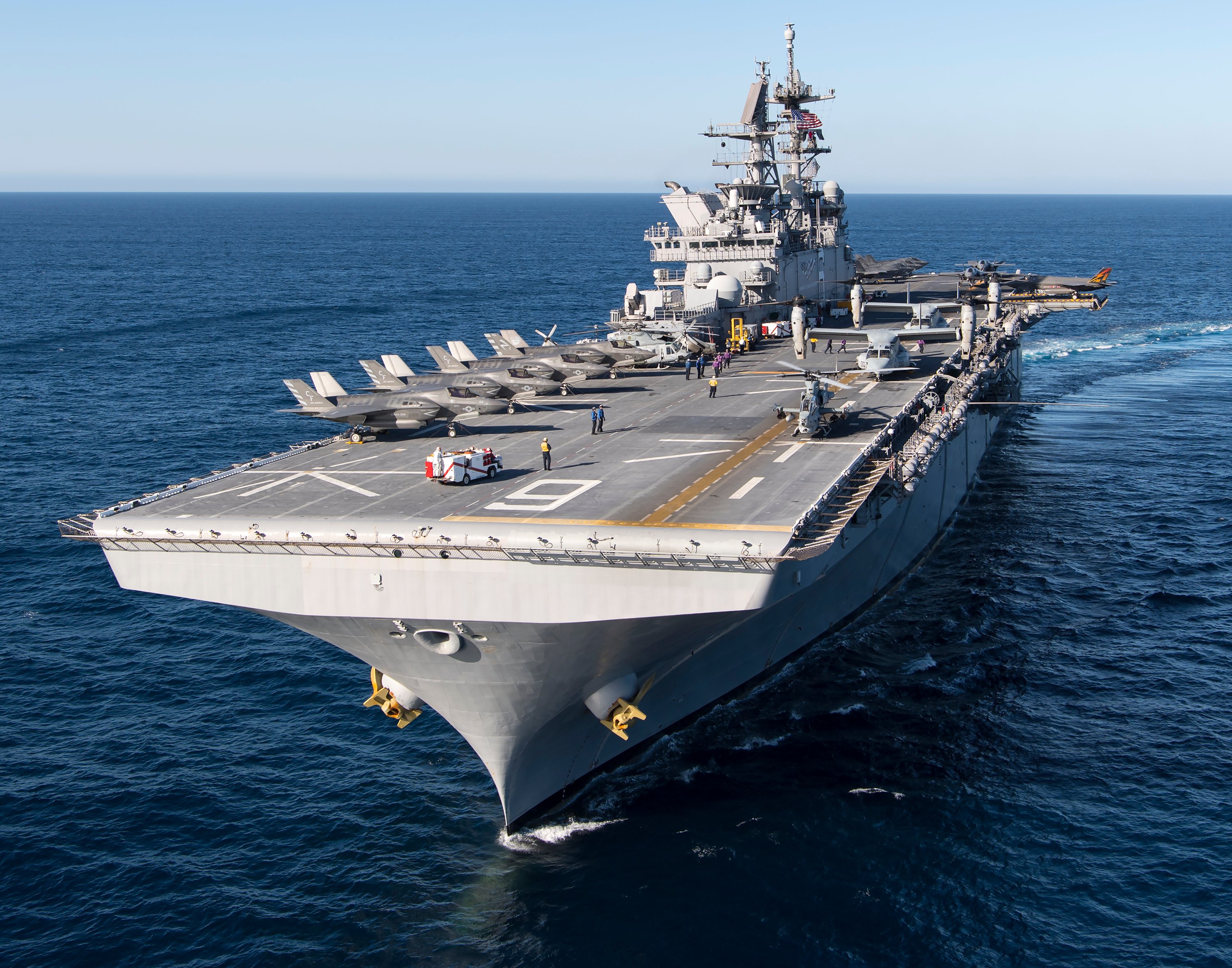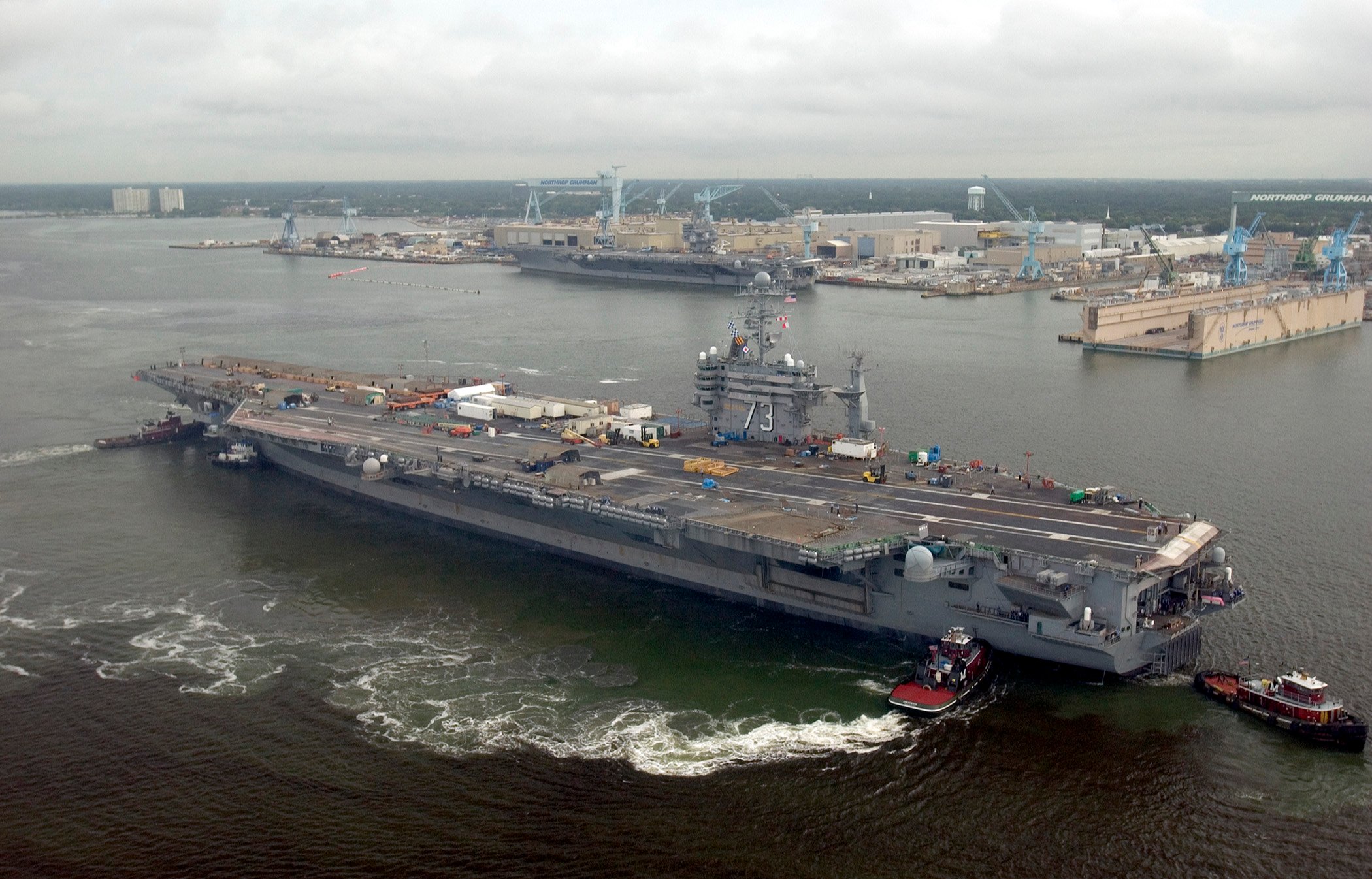Shipbuilder Huntington Ingalls (HII +0.28%) reported a choppy fourth quarter, beating earnings estimates thanks to lower taxes and a reduced share count but generating an operating profit that was below expectations. This is a company with a lot of long-term trends developing in its favor, but the quarter made clear that potential will take time to materialize.
Huntington Ingalls posted adjusted earnings per share of $4.94, ahead of the $4.51-per-share estimate, but operating profit fell due to issues in the Virginia-class submarine line. Total shipbuilding margin was 7.1%, down more than 300 basis points year over year and compared to the prior quarter, with margins at its massive Newport News facility sliced in half from the previous quarter because of the submarine issues and a lack of deliveries.

The USS Delaware moves from production facility to dry dock at Huntington Ingalls' Newport News shipyard. Image source: Huntington Ingalls.
Huntington had a solid quarter in terms of new bookings (having recorded $3.3 billion in new contract awards), and started 2019 with an important carrier win. The challenge now is to reassure investors that it can make a solid profit on all those orders.
Here's a look at Huntington Ingalls' quarter and the company's outlook for the year to come.
Suboptimal results
Huntington Ingalls' problems in the quarter centered on the USS Delaware, a Virginia-class attack sub that required higher-than-expected completion costs. The issue caused Huntington Ingalls to reassess the forthcoming USS Montana and the remaining boats to be delivered, resulting in $20 million in added costs for the quarter and likely additional costs as further deliveries are scheduled.
CEO Mike Petters on a call with analysts called the extra cost "a routine adjustment," and said Huntington Ingalls will fold what it's learned from the delivery process into the ongoing negotiations for the next block of submarines.
"I feel very confident about where the submarine program at Newport News is," Petters said. "And I'm also pretty excited about the future of that program as we go forward."
The extra cost is not a catastrophe, but it could delay an expected profitability boost as this program matures. Last May, Huntington Ingalls' management forecast return on sales for shipbuilding to be between 7% and 9% in 2018 and 2019 before gradually increasing by 2020, but many on Wall Street said that estimate was overly conservative.
Huntington Ingalls still fell comfortably within its projected range despite the added costs, but with the prior estimate now appearing more realistic than conservative, a potential near-term catalyst for the shares is evaporating.
Check out the latest Huntington Ingalls earnings call transcript.
Orders on the rise
One of the issues weighing on Huntington Ingalls in the fourth quarter, and throughout 2018, was a lack of deliveries. While companies receive payments throughout the long development and manufacturing cycle for a new ship, margins generally improve as individual vessels or programs near completion and research and development and materials procurement expenses fall.
Huntington Ingalls delivered just two ships in 2018 but has five deliveries scheduled this year, including the Delaware and four smaller ships. Due to some ship-specific issues like the submarine problems it is unclear how much of a margin boost each of these deliveries will generate, but the company should also benefit assuming the USS John F. Kennedy, the Navy's second in a new class of aircraft carrier, achieves sea launch by year's end as planned.

USS Gerald R. Ford, the first of the new class of carriers now under construction at Newport News. Image source: Huntington Ingalls.
Looking past 2019, there is a lot of potential growth on the horizon. The Pentagon in late January said it intends to order its next two carriers simultaneously, instead of one at a time, committing to a long-running Huntington Ingalls policy priority. The two-contract order, valued at more than $15 billion, will save the company and the government billions in materials sourcing and employee training costs.
The company currently has 10 destroyers under contract to build and, as mentioned, is currently in negotiations with the Pentagon for the next block of Virginia-class submarines. It is among the favorites to win a new frigate program, with an award possible in early 2020. It also continues to churn out Coast Guard cutters, and is in negotiations for a fresh batch of amphibious transport dock ships.
The best is yet to come
Huntington Ingalls was spun from Northrop Grumman in 2011 in part because shipbuilding, while slow and steady, lacks the growth profile that appeals to many investors. In the years that followed, that predictability became a selling point for Huntington Ingalls, especially during the 2008 recession and Washington budget battles that followed.
The company's stumbles in recent years, first with the carrier program and now with the submarines, have called that predictability into question. Over the next year, it will have an opportunity to prove those issues are behind it, and allow investors to focus on the impressive pipeline and the long-term stability that massive orders like the carrier buy provide.
HII one-year chart data by YCharts.
Huntington Ingalls trades at about 14 times earnings, a discount to the more diversified primes like Lockheed Martin (17 times earnings) and General Dynamics (15.6).
That's understandable, given the portfolio concentration and the inherent risk that comes from having so much revenue tied to individual projects, but the gap should narrow if the company is able to improve profitability heading into 2020. And Huntington Ingalls' revenue visibility nearly a decade out could intrigue investors in future quarters if Washington budget battles cast doubt on Pentagon spending growth.
Huntington Ingalls at its best is a classic buy-it-and-forget-it stock, offering not only gradual growth but predictable revenue and earnings over a long time horizon. Recent stumbles have cast some doubt on that status, but 2019 can be the year that Huntington Ingalls gets predictable once again.







